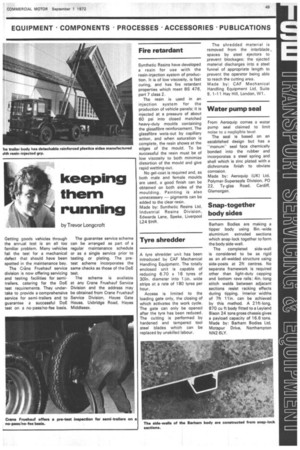Fire retardant
Page 55

If you've noticed an error in this article please click here to report it so we can fix it.
Synthetic Resins have developed a resin for use with the resin-injection system of production. It is of low viscosity, is fast curing, and has fire retardant properties which meet BS 476, part 7 class 2.
The resin is used in an injection system for the production of vehicle panels: it is injected at a pressure of about 60 psi into closed matched heavy-duty moulds containing the glassfibre reinforcement. The glassfibre wets-out by capillary action, and when saturation is complete, the resin shows at the edges of the mould. To be successful the resin must be of low viscosity to both minimize distortion of the mould and give rapid wetting-out.
No gel-coat is required and, as both male and female moulds are used, a good finish can be obtained on both sides of the moulding. Painting is also unnecessary — pigments can be added to the clear resin.
Made by: Synthetic Resins Ltd, Industrial Resins Division, Edwards Lane, Speke, Liverpool L24 9HR.


































































































